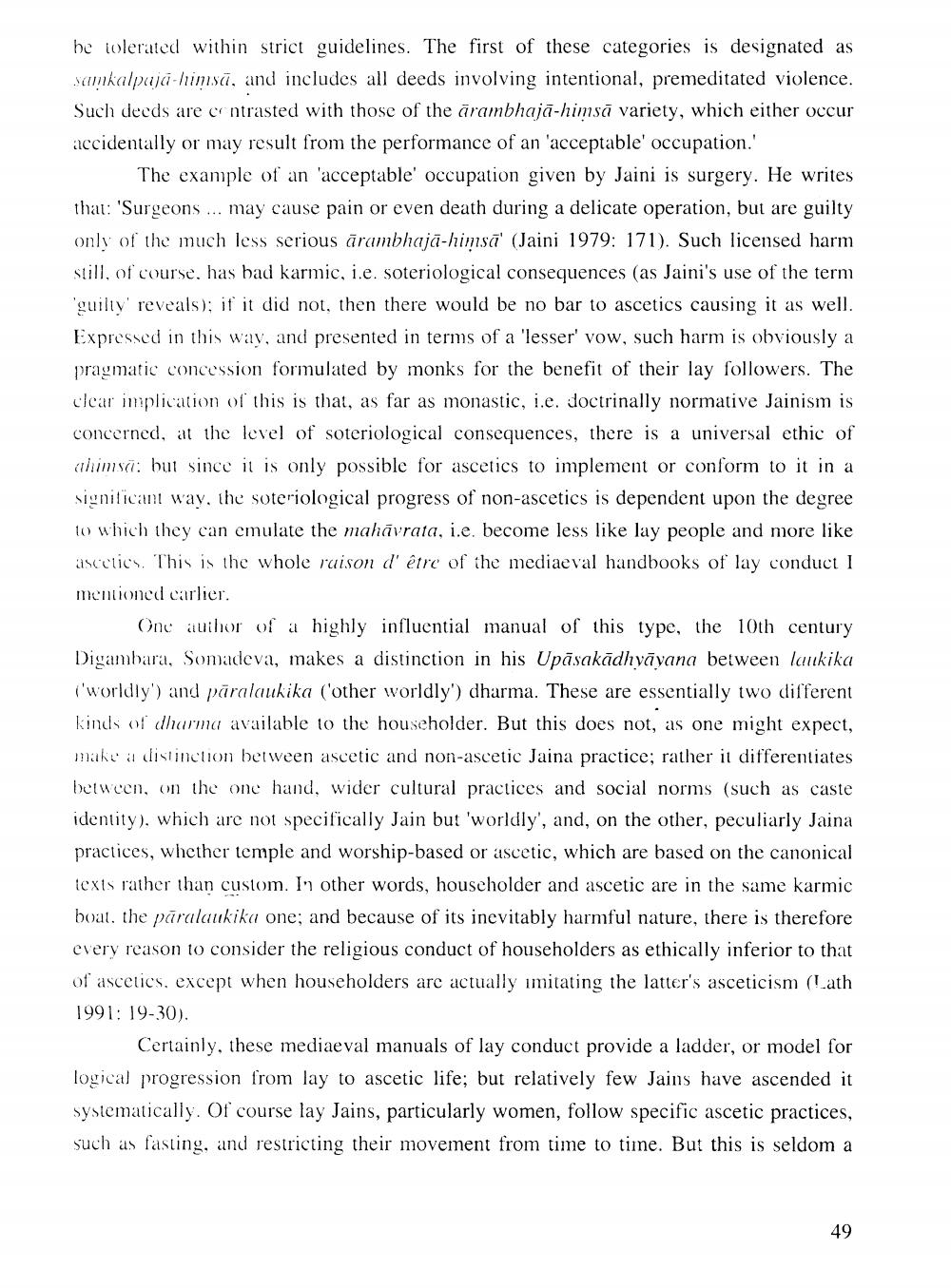________________
be tolerated within strict guidelines. The first of these categories is designated as sankalpaju-himsā, and includes all deeds involving intentional, premeditated violence. Such deeds are contrasted with those of the arambhajā-himsā variety, which either occur accidentally or may result from the performance of an 'acceptable' occupation.'
The example of an 'acceptable' occupation given by Jaini is surgery. He writes that: 'Surgeons ... may cause pain or even death during a delicate operation, but are guilty only of the much less serious ārambhaja-himsa (Jaini 1979: 171). Such licensed harm suill, of course, has bad karmic, i.e. soteriological consequences (as Jaini's use of the term guilty' reveals); if it did not, then there would be no bar to ascetics causing it as well. Expressed in this way, and presented in terms of a 'lesser' vow, such harm is obviously a pragmatic concession formulated by monks for the benefit of their lay followers. The clear implication of this is that, as far as monastic, i.e. doctrinally normative Jainism is concerned, at the level of soteriological consequences, there is a universal ethic of ahimsa: but since it is only possible for ascetics to implement or conform to it in a significant way, the soteriological progress of non-ascetics is dependent upon the degree to which they can emulate the mahāvrata, i.e. become less like lay people and more like asceties. This is the whole raison d'être of the mediaeval handbooks of lay conduct I mentioned earlier.
One author of a highly influential manual of this type, the 10th century Digambara, Somadeva, makes a distinction in his Upāsakādhyāyana between laukika ('worldly') and paralaukika ('other worldly') dharma. These are essentially two different kinds of dharma available to the householder. But this does not, as one might expect, make a distinction between ascetic and non-ascetic Jaina practice; rather it differentiates between, on the one hand, wider cultural practices and social norms (such as caste identity), which are not specifically Jain but 'worldly', and, on the other, peculiarly Jaina practices, whether temple and worship-based or ascetic, which are based on the canonical texts rather than custom. In other words, householder and ascetic are in the same karmic boal, the paralaukika one; and because of its inevitably harmful nature, there is therefore every reason to consider the religious conduct of householders as ethically inferior to that of ascetics, except when householders are actually imitating the latter's asceticism (Lath 1991: 19-30)
Certainly, these mediaeval manuals of lay conduct provide a ladder, or model for logical progression from lay to ascetic life; but relatively few Jains have ascended it systematically. Of course lay Jains, particularly women, follow specific ascetic practices, such as fasting, and restricting their movement from time to time. But this is seldom a
49




